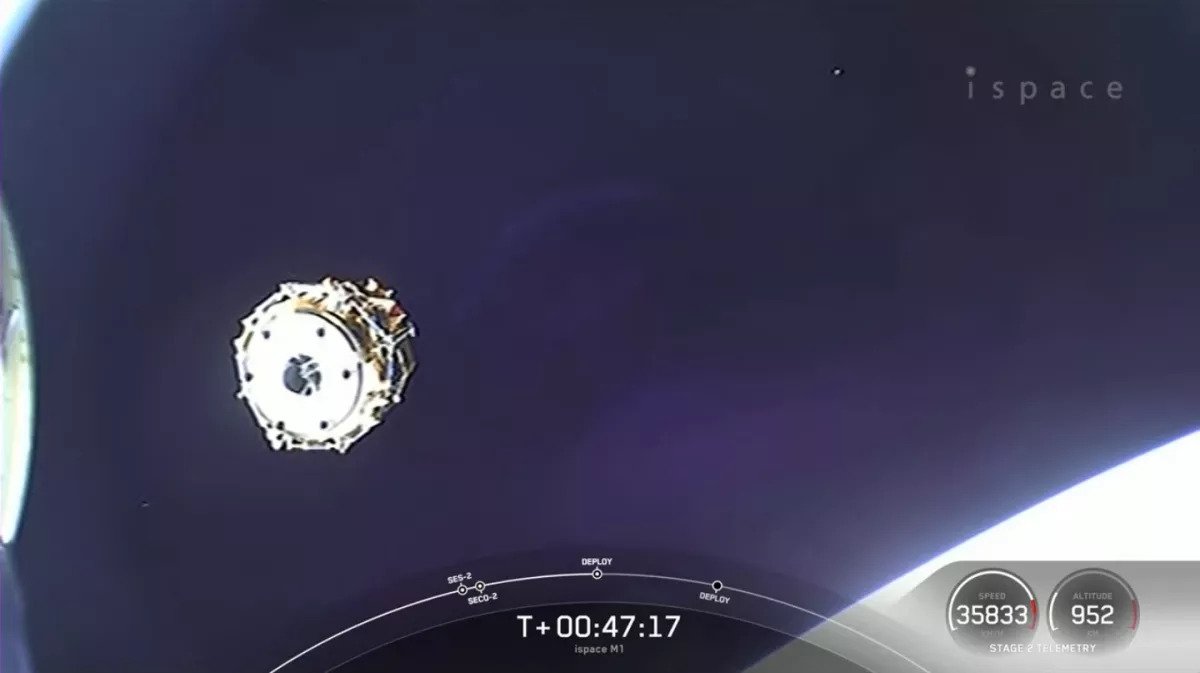On Sunday, the Falcon 9 rocket launched several automatic missions on a trajectory to the Moon. The main one was the Japanese Hakuto-R. But besides it, the NASA Lunar Flashlight and the Rashid robot of the United Arab Emirates are heading to the moon of our planet.

Hakuto-R finally launched
SpaceX’s Falcon 9 rocket launched a number of automatic probes into space at 9:38 a.m. on December 11, GMT+2. Its first stage, as planned, returned back to Cape Canaveral, and the upper one brought its payload on a trajectory to the Moon.
The main thing in this flight is the first commercial Japanese space mission Hakuto-R. Its launch was scheduled for November 30, but for a number of reasons it was postponed. In any case, the mission’s path to the Moon will be long. Only in April 2023, it will land in the Atlas crater on the southeastern edge of the Mare Frigoris (“Sea of Cold”).
The developer of Hakuto-R is the Tokyo-based company iSpace. It states that the landing of the first commercial spacecraft on the Moon, which will be Hakuto-R in case of success, is not an end in itself, but only the first step for them. The company plans to implement all the goals set by Google Lunar X Prize.
Although this competition for the delivery of a commercial robotic spacecraft to the Moon ended back in 2018, iSpace decided to bring the matter to an end without a winner. The second mission of this project is planned to start already in 2024, and the third one – a year later.
Arab rover and American probe
No less attention than a commercial Japanese probe is attracted by the Rashid rover, which is built by the United Arab Emirates. It should become the first apparatus of a Muslim country to reach the Moon. Its weight is only 10 kg.
Its main task will be photographing the surface and measuring electric charges in the environment. It is planned that it will work for at least 14 days before the onset of the lunar night.
Another device launched to the Moon was the NASA Lunar Flashlight probe. It is a CubeSat with a powerful laser mounted on it. It is planned that it will enter a polar orbit around the Moon and will be able to illuminate the bottom of the darkest craters near the south pole with its “flashlight”.
Therefore, Lunar Flashlight will try to find ice under the regolith layer that will provide this settlement with water.
According to www.space.com
Follow us on Twitter to get the most interesting space news in time
https://twitter.com/ust_magazine

